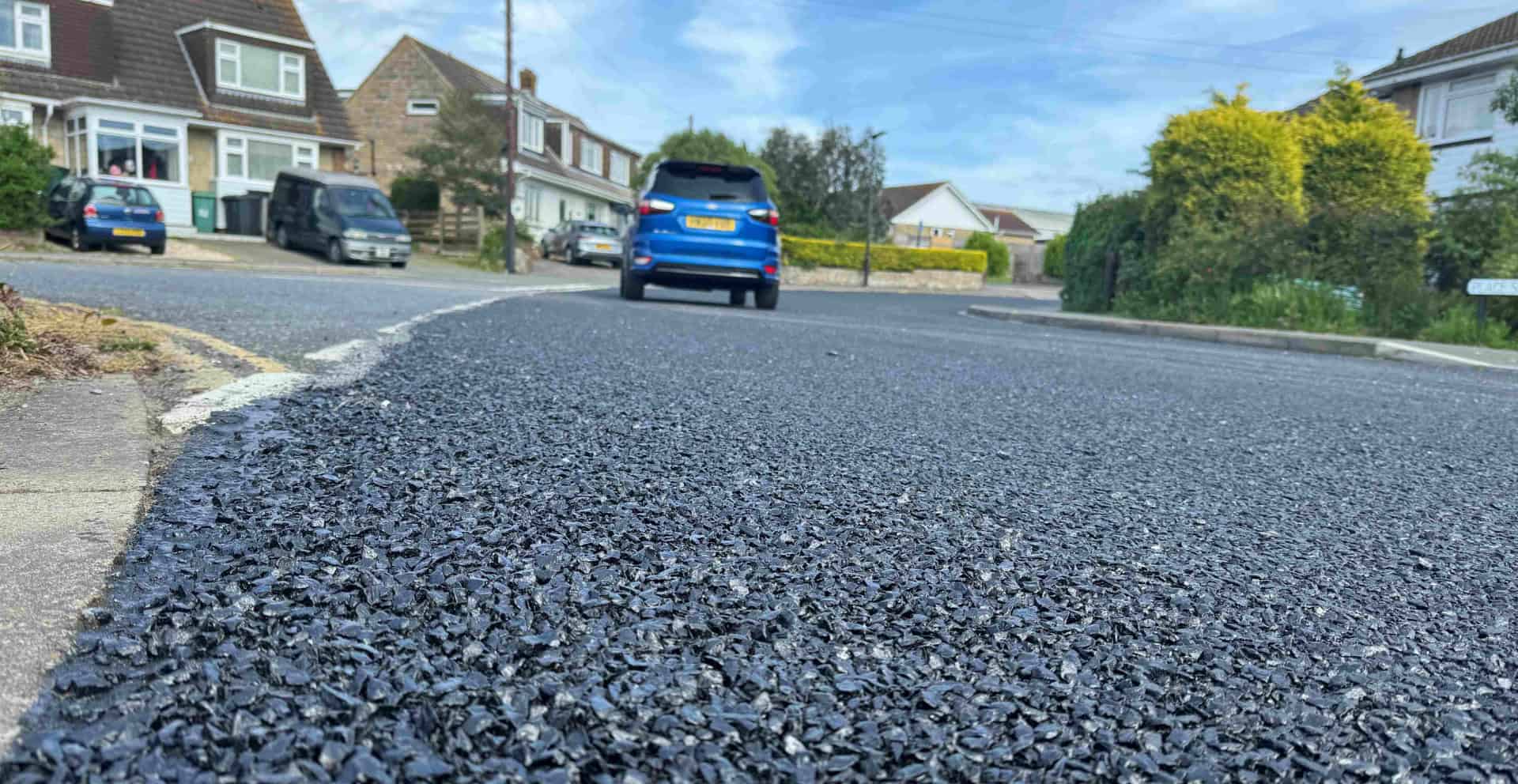If you travel on Isle of Wight roads you might have noticed a change to some of the road surfaces in the last few months. For example, some roads sound a lot louder to drive on and others, when recently resurfaced, have loose chippings.
That’s because the Island’s highways PFI contractors — Island Roads — are now using a technique called ‘surface dressing’ on some roads.
They say that, “surface dressing not only improves a road’s skid resistance, it also seals the highway surface stopping the ingress of water which is a major cause of potholes”.
Readers’ concerns
However, OnTheWight has had residents get in touch with concerns about this new method. One reader claimed “if you drive more than 10mph, you run the risk of chips damaging windscreens and paintwork”.
So OnTheWight got in touch with Island Roads about this and other issues to find out more about this fairly new technique being used on the Island’s highways.
IR: Chippings should not be a problem
A spokesperson for Island Roads told OnTheWight,
“After the stones are laid the site is swept for loose chippings. The process then relies on the movement of traffic to embed the chippings. Further sweeps are undertaken 24 hours, 48 hours and 7 days post treatment.
“On less trafficked sites, where the bedding down process would take longer, a secondary ‘Lockchip’ sealant is applied to seal chippings.
“20 mph speed restrictions and warning signs are also put in place while chippings remain loose.
“Through the combination of bedding down, sweeping and the secondary treatment, chippings should not be a problem.”
How are roads selected?
It was also suggested to OnTheWight that some roads, which seemed without flaw, have received surface dressing, so we asked Island Roads what the process for selecting roads for this technique was.
A spokesperson for Island Roads told OnTheWight,
“Surface dressing is a surface maintenance treatment which seals the carriageway to prevent water ingress which is the major cause of pothole formation. Typically, these roads may not be in the worst condition but, left untreated, their condition would deteriorate.
“The treatment is also effective in improving skid resistance – the need for which cannot be identified through visual inspections. In other words, a road that may look in good condition may in fact require increased skid resistance.
“Furthermore, because of the way it is laid, surface dressing minimises disruption to road users and residents alike
“Site selection uses a variety of data including SCANNER/SCRIM surveys and advice from specialist contractors.”
Why use it?
When asking where the impetus for ‘surface dressing’ came from, Island Roads explained it “is a recognised treatment within the PFI contract” and that the 2024 programme was being delivered following discussions between themselves and Isle of Wight council.
The cost of this work is included in the Highways PFI contract.
Surface dressing may not be appropriate for all roads
For those readers wondering whether roads, which since the start of the roads PFI have remained unresurfaced and continuing to get worse, will receive just ‘surface dressing’, we asked the question. The spokesperson for Island Roads told OnTheWight,
“There are a variety of treatments available to improve the condition of a road or to prolong its lifespan.
“Surface dressing is likely to be used again however it may not be appropriate for all roads including those which require more substantial work.”
Are surface dressed roads noisier?
When OnTheWight raised the issue of increase noise levels when driving on roads that have been surface dressed, Island Roads replied,
“Surface dressing can initially produce a little more tyre noise however this reduces once the chippings are fully embedded (typically within four weeks).
“We have no record of being contacted by residents in connection with noise and surface-dressed roads.”
Loose chippings
The final issue that was raised with OnTheWight by readers was claims of “chips of stone flinging up, increasing potential damage to car windscreen and paintwork on”.
A spokesperson for Island Roads told OnTheWight,
“After stones are laid the site is swept for loose chippings. The process then relies on the movement of traffic to embed the chippings. Further sweeps are undertaken 24 hours, 48 hours and 7 days post treatment.
“On less trafficked sites, where the bedding down process would take longer, a secondary ‘Lockchip’ sealant is applied to seal chippings.
“20 mph speed restrictions and warning signs are also put in place while chippings remain loose.
“Through the combination of bedding down, sweeping and the secondary treatment, chippings should not be a problem.”





